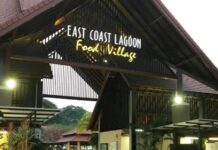MINNEAPOLIS – Music fans around the world and Minnesota residents have long wondered about Paisley Park, the late pop icon Prince’s mysterious studio complex to which few have had full access.
On Thursday, the mystery came to an end for some fans who snared tour tickets and descended on the Minneapolis suburb of Chanhassen to see inside the late “Purple Rain” star’s 55,000-square-foot (5,100-square-meter) inner sanctum.
The unveiling was decidedly muted.
Organizers required ticket holders to meet at an offsite location and be bused into the complex in groups.
Fans described the tour as an emotional experience, especially when they were confronted by Prince’s ashes in a Paisley Park replica urn.
Sonja Fagan, a 37-year-old from Dublin, arrived with a bouquet of roses, saying Paisley Park was now a place of mourning.
“His legacy is going to live on, and that’s what he would have wanted,” she said.
Fan Rhonda Watson travelled 1,000 miles (1,600 kilometers) from Tennessee to tour the complex.
“It is very unique and very distinctive, and it’s a very creative space, just like the musician,” she said.
“I am very grateful that I am one of the people that got to experience that today.”
Prince died on April 21 from an accidental overdose of painkillers, at the age of 57.
The complex opens one week before a memorial tribute concert in St. Paul, which is adjacent to Minneapolis.
The public opening of the studio complex is a milestone for music lovers and historians.
It was the pop legend’s “playground,” said Mobeen Azhar, author of the book “Prince: Stories from the Purple Underground.”
“Paisley Park is where he would play, experiment and most importantly create,” Azhar said.
“That spirit of creativity is just so strong. For that reason, as far as I’m concerned, Paisley Park is holy ground.”
The complex opened in 1987, and was a fully functional recording studio used by a number of artists during its peak in the 1990s, including the Stone Temple Pilots, REM and Madonna.
Prince also arranged impromptu free shows and parties there for small groups of fans.
Rashad Shabazz, a professor of cultural geography at the University of Arizona, said he attended one such show in which Prince took the stage at 12:30 am before an audience of about 50 people.
The star performed for three hours – playing every instrument and stepping into the crowd to direct the band from the floor.
“You didn’t have to have a ticket. You just walked in. You stood at the stage five feet from him,” Shabazz said.
“Those free shows gave people, poor people, particularly students… access to him.”
Prince has drawn tourists from all over the world to the Minneapolis area ever since the 1984 release of “Purple Rain,” said Michaelangelo Matos, a Minnesota-based music critic and author of a book about Prince’s album titled “Sign O’ the Times.”
“We’re Liverpool and he’s The Beatles,” Matos said.
While some parts of Paisley Park were now outfitted to exhibit memorabilia, other areas – such as his working studio – have been left untouched since the singer’s death, tour attendees said.
Rooms in the studio complex were themed according to Prince’s albums, like Graffiti Bridge or Purple Rain.
The superstar’s vast collection of distinctive costumes, pianos and guitars from each time period were on display throughout.
Another room was dedicated to his electrifying 2007 Super Bowl halftime show, featuring a video of the performance that is widely regarded as one of the sporting event’s most legendary.
“He was bigger than life, and you see that,” said fan Jennifer Wolf.
Phyllis Jackson, a 77-year-old Minnesota resident, left the tour with two Prince posters.
“I’ve been to Graceland several times,” Jackson said, “This is so much more. You can see that he was thinking of it as a museum before he died, because there was so much in there.”
Public access to Paisley Park was expected to be short-lived, as Chanhassen city officials granted temporary permits on three dates for the complex to offer tours.
A broader permit that would turn the site into a permanent museum – akin to Elvis Presley’s Graceland – was delayed earlier this week, over concerns that the estimated 600,000 fans expected to visit year would create traffic jams and congestion in the town of 24,000.
City officials asked the site’s administrator, the Bremer Trust, to formulate a detailed plan to address those concerns with a more detailed plan to address the tourism impact.















































